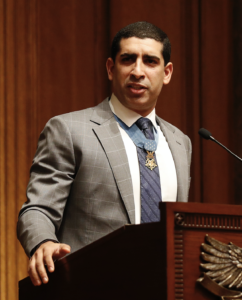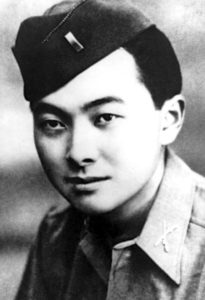Charleston Regional Business Journal, Patrick Hoff, 7/30/2018
The National Medal of Honor Museum Foundation has unveiled two potential new designs for its future museum planned to be built at Patriots Point next to the USS Yorktown.
The designs by architect Moshe Safdie replace the original 120-foot museum design, also by Safdie, that struggled to gain approval from Mount Pleasant because it was too tall for the town’s height limits on new construction. That limit is 80 feet at the museum site.
Joe Daniels, CEO of the National Medal of Honor Museum Foundation, said the foundation and Safdie had made “great strides” in the month since the foundation held an initial public input session to hear what the community wants to see in the museum’s design.
“I do believe years from now when we open this museum, it will be kind of neat to be able to share with your family and your kids that you played a role in making what will be what I think will be America’s next national treasure a reality,” Daniels said at a public input session about the new designs last week at Alhambra Hall.
The first design, referred to as the “pavilion scheme,” looks similar to the original design, but the museum section is 99 feet at its highest point, 21 feet shorter than the original design. Safdie said he was able to reduce the height by moving the conference center out of the museum and into the pavilion section, which also include lobbies and classrooms. He said this design is a similar height to surrounding buildings.
The second design, referred to as the “village scheme,” further reduces the height of the museum by spreading out exhibits among five buildings connected by bridges and centered around a chapel. The village scheme is 70 feet tall at its highest point.
The buildings in the village scheme “will be lower and within the tree line, with a building that has less of a powerful presence,” Safdie said. “In fact, it will be lower than the surrounding apartment buildings.”
The architect said he was “sincerely curious” about people’s reactions to the new designs because each has a particular character.
“One of the fascinating questions for us is appropriateness,” Safdie said. “As we discuss this … we are sincerely curious about the responses and the reactions, and to me, the most important question is, what is appropriate?”
During an initial survey facilitated by David McNair of The McNair Group, the majority of participants at the public input session felt that the pavilion scheme is the most appropriate design for the museum’s purpose and for its location. An online survey about the new designs is also open through Tuesday.
Safdie said at the end of last week’s public input session that he tried not to reveal any preference when initially presenting the new designs but that as he listened to people, he was encouraged that public opinion resonated with his own judgment.
“There are wonderful things about the village scheme … but when it’s all said and done, it didn’t feel right,” Safdie said. “It didn’t feel like it rose to the occasion, if I could put it that way. It needed to be more unified, there needed to be more togetherness, and I think scheme B (the pavilion scheme) is superior to the original. It sits more comfortably in the landscape but it holds its own.”
He added that he feels good about the design process going forward.
Daniels said both of the new designs are projected to cost less to construct than the original design would have.
A third public input session is planned for Aug. 21 at Wando High School, where a single design will be shared with the community for further comment.
“Hopefully after that, we’ll submit to the (Town) Council and be off to the races,” Daniels said.





